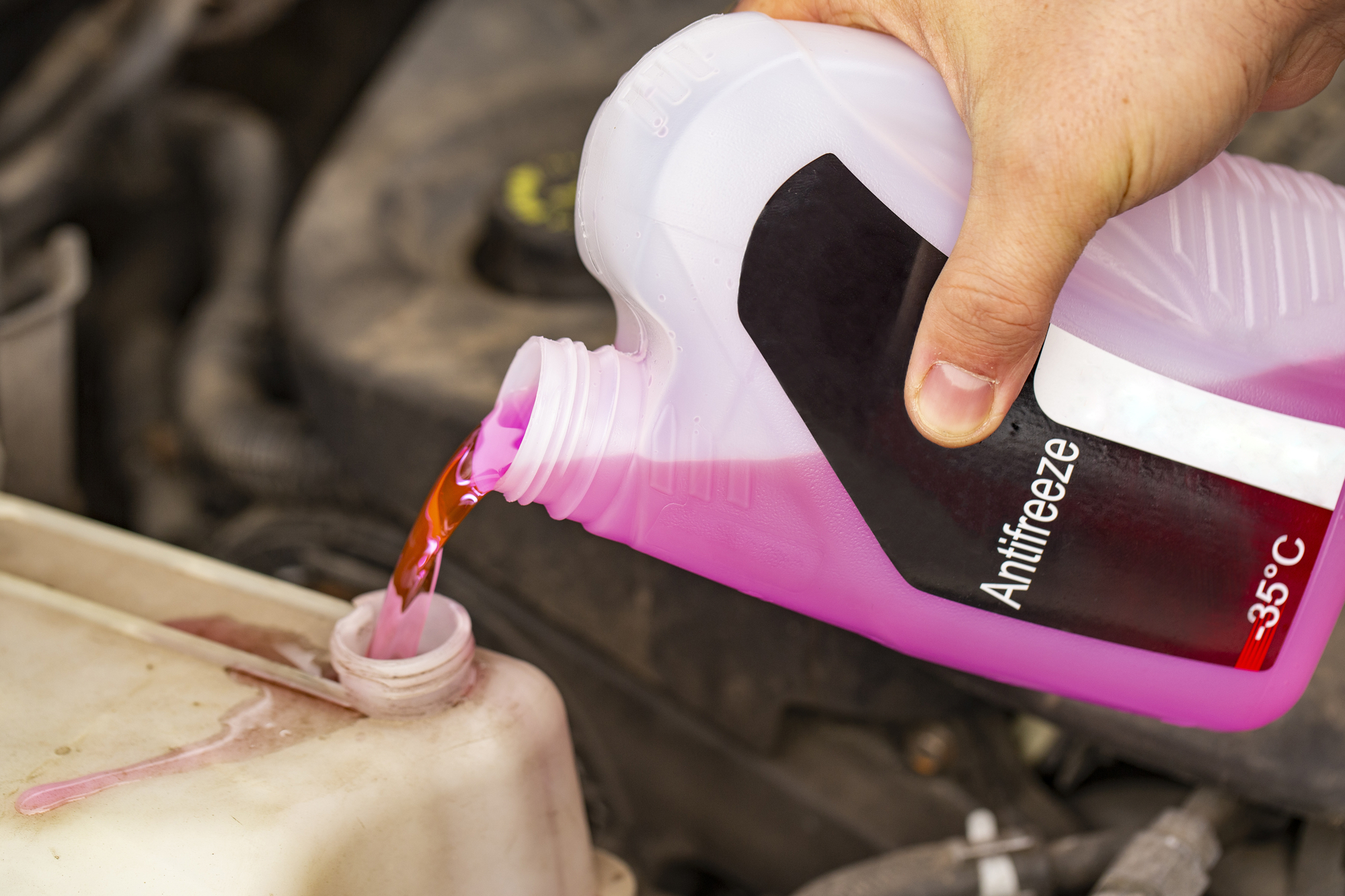Most of us have heard of coolant because, unfortunately, most have also had the engine overheat. While it’s the radiator that regulates the temperature of the engine, acting as a cooling system to keep it from overheating, it can’t do its job effectively without coolant.
What is Coolant?
Coolant, also referred to as antifreeze, is a bright green or yellow fluid made from propylene glycol or ethylene glycol. The coolant mixes with the water in a vehicle to keep the radiator from freezing or overheating, protecting the engine from damage. In addition, coolant helps protect metals and non-metallic plastic and rubber parts in the engine, as well as the cooling circuit.
How to Check Your Coolant Levels
It’s just as important to check coolant levels, refilling when necessary, as it is to check and refill the motor oil. Knowing how to put coolant in your car not only saves money but can save time as well.
NOTE: Always wear gloves and eye protection when working in the engine area.
Your vehicle’s owner manual will tell you how often you should check coolant levels. If the engine’s hot when the coolant level is checked, it should fall below the “max” line on the reservoir. If the engine is cold, it should fall at or above the fill or “minimum” line.
If you’d rather not check coolant levels yourself, it’s an included service with most auto care centers. They will also top the coolant off for you if levels are low.
How to Put Coolant in a Car
- Lift and secure the hood of the vehicle.
- Locate the overflow reservoir (your vehicle’s owner’s manual will tell you where it’s located).
- Use a piece of cloth to open the reservoir, slowly turning the cap counterclockwise, which allows air to escape a bit at a time.
- Look for the line that signifies the maximum liquid level.
- Place a funnel inside the reservoir, slowly adding the coolant until it reaches the “max” line.
- Put the cap back on the reservoir and tighten firmly, turning it clockwise.
Coolant is Dangerous
Coolant is a toxic chemical, so it’s important to keep it away from children and animals. If ethylene glycol is consumed, it becomes acid that can damage kidneys, inducing kidney failure, and possibly death. Because coolant has a sweet taste and scent, pets are particularly vulnerable. Even a half teaspoon of ethylene glycol can kill an average-sized cat and eight ounces can kill up to a 75-pound dog. Propylene glycol isn’t as toxic but is still a potentially dangerous chemical. Coolant is also flammable, and when the glycol is raised to a high temperature, it can catch fire, even when water vapor is present.
Because both ethylene glycol and propylene glycol are hazardous chemicals, most states have laid out specific procedures for disposing of coolant. Never pour coolant down the drain or dump it on the ground. Besides being flammable and poisonous if consumed, coolant can seep into groundwater and pollute rivers and streams.
If you decide to take care of the coolant in your car yourself, you will need to dispose of it properly. Store coolant in a prominently labeled container and take it to an antifreeze recycler. If you’d like to save the hassle, contact us to have your car serviced.






